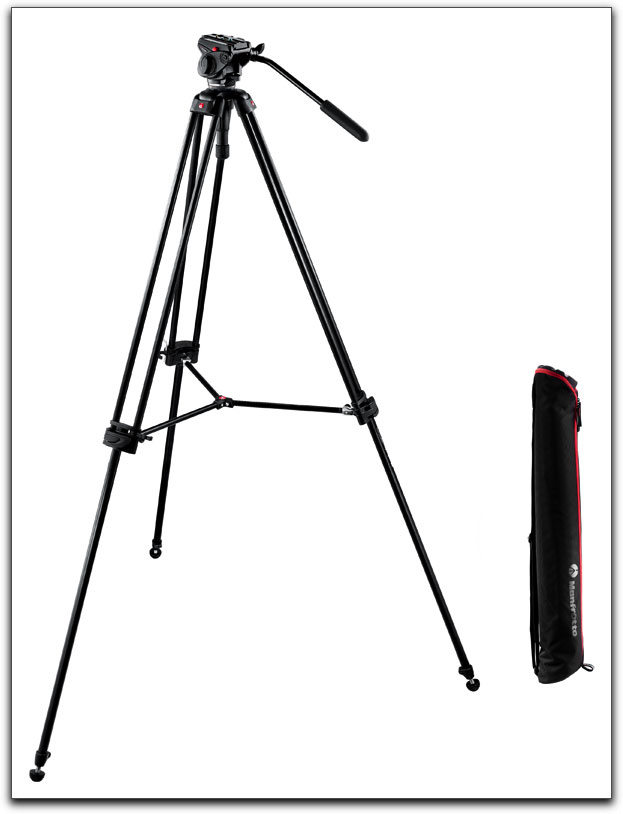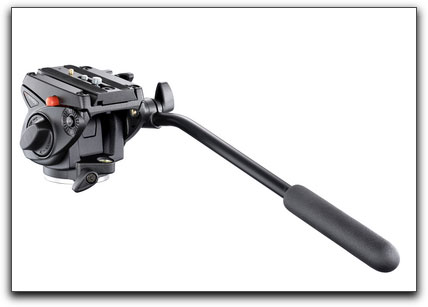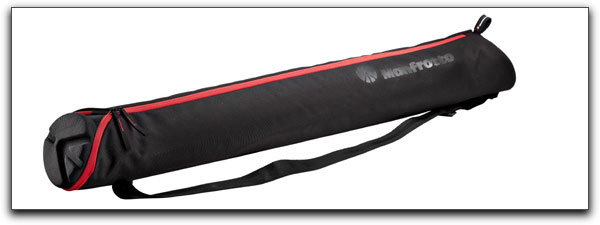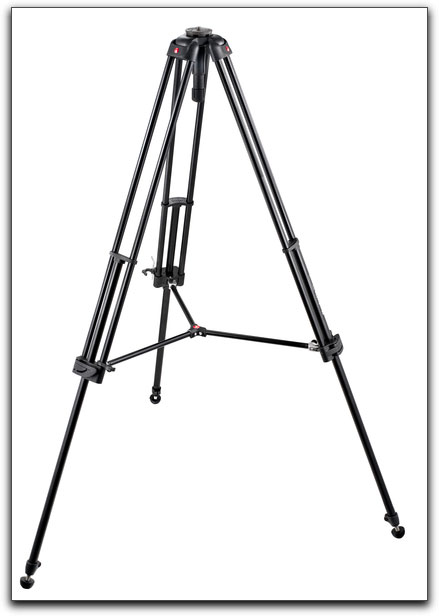July 27, 2009

http://www.manfrotto.com - $300.00
Review by Steve Douglas
There's no question that having and using a good tripod with an equally good head is of paramount importance for any shooter no matter what genre of film or video they approach.
For those getting into video for the first time there seems to be different stages in their tripod evolution. Usually the individual purchases their initial camcorders and is thrilled with getting the $40.00 cheapie tripod thrown in to the deal for 'free'. Or they head out to the local stereo/video/cam warehouse and buy the cheapest tripod they believe will do the job. These tripods tend to bow in at the legs, are terribly unstable and the head, which cannot be separated from the legs, produces pans and zooms not much smoother than what they could do hand holding the cam. It generally takes awhile to wake up to the idea that a better quality, albeit more expensive, tripod will be required. Nothing to be ashamed of, most of us started that way.
Tripods along with a good head can cost up to several thousands of dollars. Before purchasing any tripod/head system there are some things to consider. Price is certainly one factor, but one also needs to take into account the weight of the camcorder you will be using. A heavier camcorder will demand a considerably sturdier head and legs to support and balance it. Too small a head and you can lose control of the different movements you attempt with your camera. On the opposite end of things, should you get a head that is too sturdy for one of the lighter weight cams, you may find that this mismatch results in greater resistance with drag settings that are simply too strong. This may result in uneven pans and tilts and jerky video.
Ideally, a true fluid head is the way to go as this type of head maintains resistance hydraulically with far greater control. Beware of advertisements that say 'fluid like' head. These heads are not fluid at all. They work and are controlled primarily by the friction of the heads' moving parts. At first they may seem quite nice and smooth but with time, you will see a real breakdown in just how precise a movement you can make with them.
The legs of your tripod are also something to consider. Legs come in aluminum, carbon fiber and other common materials. There are those who still swear by their wooden legged tripods. The materials are part of the determination of where and how you will be using your tripod. For an individual looking for a studio tripod, one that won't be taken out in the field too often, a heavy tripod is just fine. However, if you are a shooter who is constantly in the field or who is traveling by plane to far off exotic lands, you will want a lighter weight tripod. When it comes to quality in tripods, as the weight goes down, the price often goes up.

This brings us to the new Manfrotto 547B tripod and its companion 701HDV head. The Manfrotto system has all the qualities I was hoping for. It is very light weight and, coming with its own padded tripod bag, easy and comfortable to carry over your shoulder in a sling fashion. The 701HDV has a flat base with 3/8" female thread. The bowl on the 547B is 60mm and uses a 60mm ball. That's a rating that will fit a great many cams on the market. I was shooting with my old Sony A1-U with an Azden wireless system attached and it handled it just fine. I am completely confident that this system would easily handle the Sony Z-7, EX-1 or the new JVC HM 100 without a problem.
For some of the considerably smaller cams such as the Sony 520 or Canon SR10, the release plate might block removal of the battery without first removing the release plate itself. And for any owners of bottom loading tape-based cams, removal of the release plate first before changing tapes is a necessity for just about any tripod one may use.
The Manfrotto 701HDV fluid bowl head produces better fluidity as a result of improved individual internal fluid cartridges for both pan and tilt. The resistance levels for all cam movements felt smooth. The 701HDV head produced very smooth pan and tilt action with no perceivable back action. The pan bar can be mounted on either the left or right sides.
When I stopped the pan, the head stopped with me. It uses the typical Manfrotto quick release system that makes taking the camcorder off or putting it on less of a chore.

For those in the field shooting on uneven ground, the Manfrotto is a pleasure to work with allowing you to level your camcorder from the head. This is done by loosening the locking handle beneath the head and using the handle and the leveling bubble to level your camera. Then you simply tighten up the locking handle and you are ready to film. The leveling bubble faces you at the back of the head so there is no need to stretch your neck to the front or sides. It is right in front of you making leveling quick and painless.
The Manfrotto 547B two section tripod legs have a single telescoping leg/foot combo enabling you to reach a height of 59.5 inches to a minimum height, with spreader attached of 35.5 inches to the top of the release plate. It's load weighting is 33lbs, more than most will ever need for the camcorders it was designed to work with. Completely folded up and placed in its supplied padded carrying case, the Manfrotto system comes in at 40" which is kind of long for those carrying it on airplanes and such.


 Steve Douglas is a certified Apple Pro for Final Cut Pro 6 and underwater videographer. A winner of the 1999 Pacific Coast Underwater Film Competition, 2003 IVIE competition, 2004 Los Angeles Underwater Photographic competition, and the prestigious 2005 International Beneath the Sea Film Competition, where he also won the Stan Waterman Award for Excellence in Underwater Videography and 'Diver of the Year', Steve was a safety diver on the feature film "The Deep Blue Sea", contributed footage to the Seaworld Park's Atlantis production, and productions for National Geographic and the History channels. Steve is also feature writer for Asian Diver Magazine and is one of the founding organizers of the San Diego UnderSea Film Exhibition. He is available for both private and group seminars for Final Cut Pro and leads underwater filming expeditions and African safaris with upcoming excursions to the Red Sea and Egypt for Nov.2009, Feel free to contact him if you are interested in joining Steve on any of these exciting trips.
Steve Douglas is a certified Apple Pro for Final Cut Pro 6 and underwater videographer. A winner of the 1999 Pacific Coast Underwater Film Competition, 2003 IVIE competition, 2004 Los Angeles Underwater Photographic competition, and the prestigious 2005 International Beneath the Sea Film Competition, where he also won the Stan Waterman Award for Excellence in Underwater Videography and 'Diver of the Year', Steve was a safety diver on the feature film "The Deep Blue Sea", contributed footage to the Seaworld Park's Atlantis production, and productions for National Geographic and the History channels. Steve is also feature writer for Asian Diver Magazine and is one of the founding organizers of the San Diego UnderSea Film Exhibition. He is available for both private and group seminars for Final Cut Pro and leads underwater filming expeditions and African safaris with upcoming excursions to the Red Sea and Egypt for Nov.2009, Feel free to contact him if you are interested in joining Steve on any of these exciting trips.